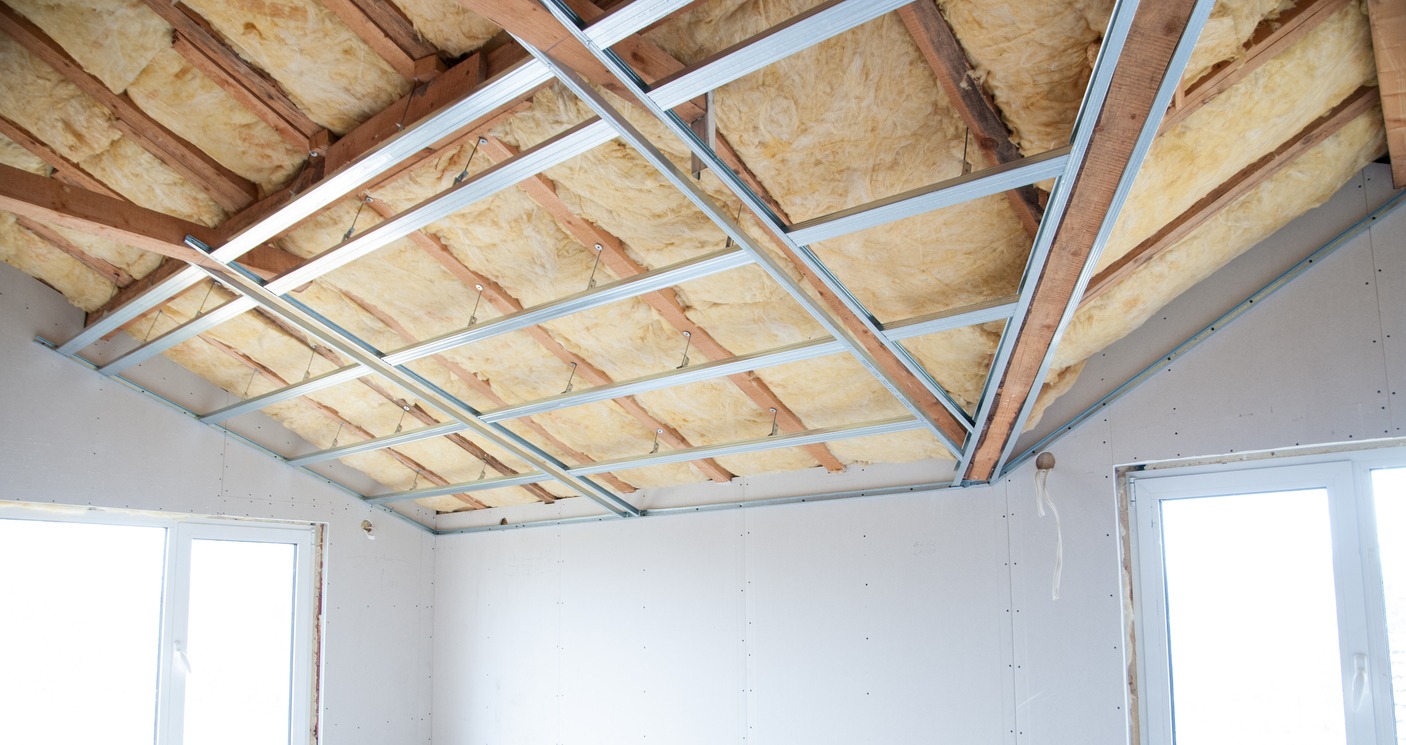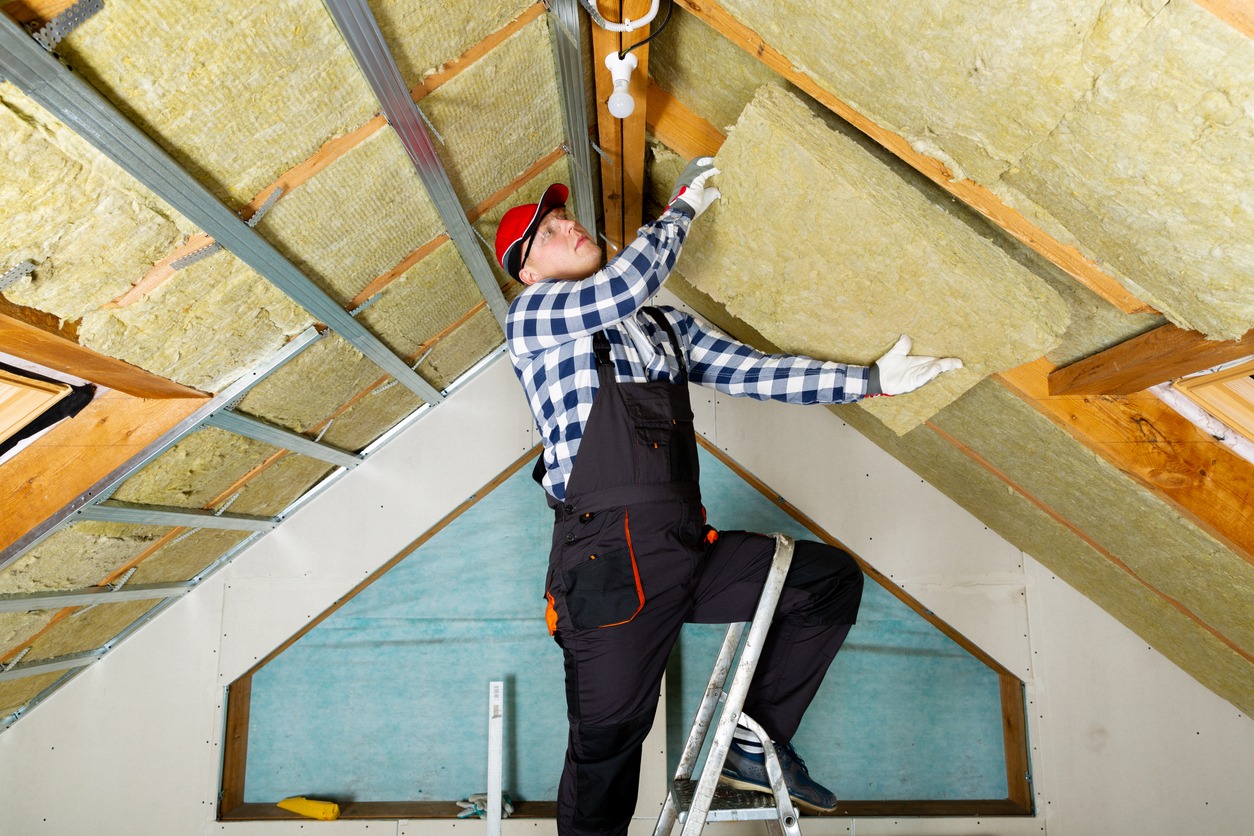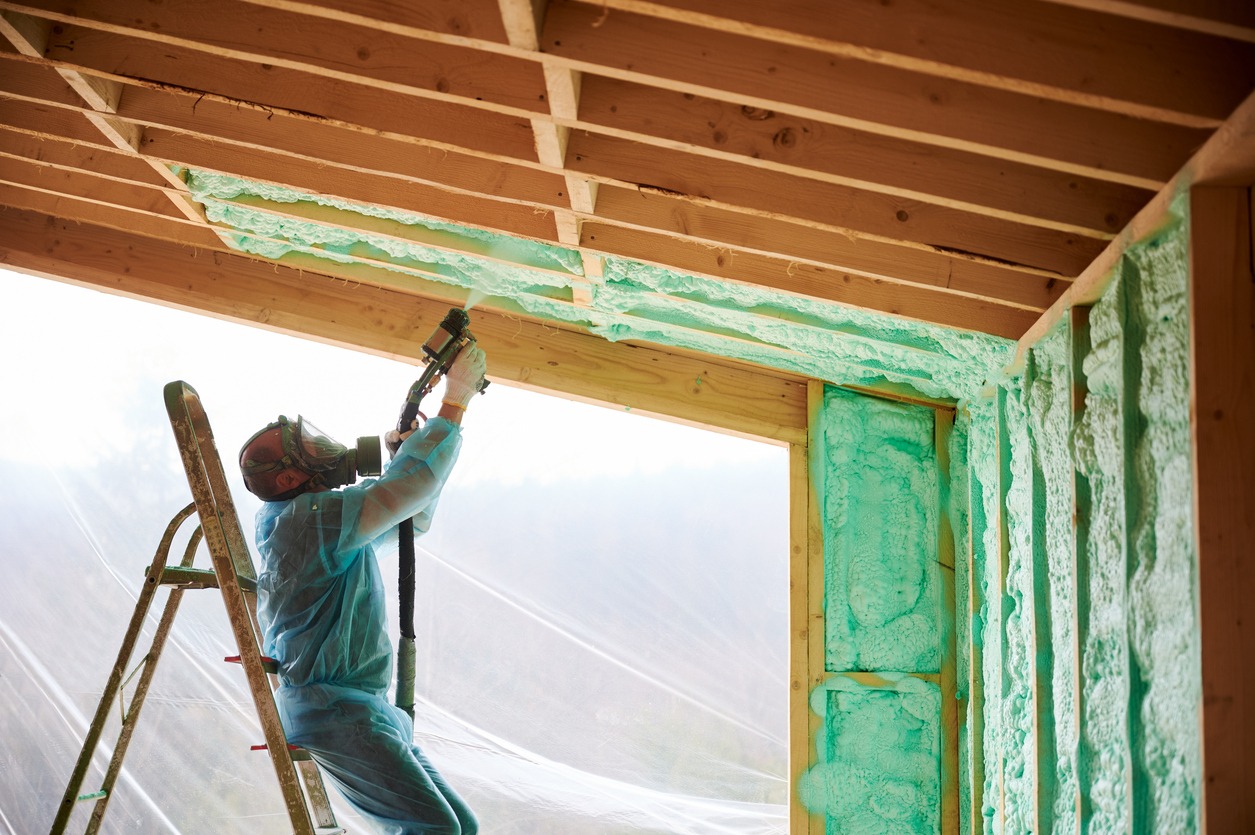In order for a home to be comfortable and energy-efficient, proper insulation is needed. Among the different areas of your home that need insulation, the ceiling is one of the most important when it comes to preventing heat transfer and regulating temperature. Whether you live in an area with extremely cold or hot climates, guaranteeing effective ceiling insulation can lead to considerable energy savings and increased comfort for the whole year.
Ceiling insulation is important if you want to have better thermal insulation across the cold winter months and a cooler summer when the heat increases. When you invest in ceiling insulation, you are also preparing your first line of defense against heat loss. If you want to learn more about this, we are here to help you. In this article, we are going to provide you with a guide to ceiling insulation, including the different types of insulations you can use, the kinds of ceilings that can be insulated, the benefits of ceiling insulation, and more.
What is Ceiling Insulation?
Ceiling insulation pertains to the material or materials used to reduce heat transfer between the living space and the attic or roof above. It is usually installed in the space between the ceiling and the roof to create a barrier that helps control the flow of heat, cold, and sound. The main purpose of ceiling insulation is to improve the energy efficiency of a home or building by reducing heat gain during the hot season and heat loss during the cold season.
To prevent the transfer of heat through the ceiling and maintain a more consistent indoor temperature, the ceiling insulation acts as a thermal barrier. In turn, it also reduces the need for excessive heating or cooling, which can help lower your energy consumption and utility bills.
Aside from regulating the temperature, ceiling insulation also works as a sound barrier. That means it can minimize the transmission of noise between different levels of a building to create a quieter and more peaceful indoor environment.
Types of Ceilings That Can Be Insulated
There are various types of ceilings out there, and almost all of them can be insulated. Below are some of the most common types of ceilings that are found in homes and commercial buildings that can be insulated:
Conventional Ceilings
Conventional ceilings are also known as standard or flat ceilings. They are the most common type, particularly in homes. They feature seamless surfaces that are usually finished with drywall and then painted. Check out our Guide to Conventional Ceilings to know more.
Drop Ceilings
Drop ceilings are also referred to as false ceilings. They are commonly found in commercial properties. They feature a secondary structure below the main ceiling and are created mostly from vinyl tiles. They act as a way to hide duct work, pipes, and sprinkler systems. They are also used for soundproofing in most spaces.
Vaulted Ceilings
These ceilings need a bit more expertise to insulate, but it is possible. Vaulted ceilings come in different forms and styles, from traditional to concave. It is important to understand the type of ceiling you have in order to find the best insulation solution for it. For vaulted ceilings, it is best to utilize a lightweight insulation solution, such as spray foam insulation.
Suspended Ceilings
Suspended ceilings are common in commercial properties like offices. Therefore, it is very important to provide a consistent and comfortable temperature for areas like these. There are various ceiling insulation that can be used for suspended ceilings, but choosing a more lightweight solution is also a good idea.
Different Types of Ceiling Insulation
When it comes to ceiling insulation, there are four main types to choose from. These are spray foam insulation, blanket fill insulation, loose-fill insulation, and structural insulated panels. Each of these has its own benefits and drawbacks. Choosing the right type of insulation for your ceiling is essential as it will provide the effect that you want to achieve in your property. To learn more about these, below are the different types of ceiling insulation:
Spray Foam Insulation
This type of ceiling insulation is probably the most popular. It is a soft foam that is usually water-blown. It is sprayed between joists and rim joists to provide an effective insulation barrier for ceilings. Spray foam insulation comes in different types. When it is sprayed, it expands to fill any holes that might be between the joists and rim joists of your ceiling. It also creates an air barrier that prevents heat from filtering out through convection.
A spray foam insulation may also minimize the build-up of condensation as it has an open-celled structure that enables the timber to breathe. If timber is unable to breathe, condensation may form and it could rot. Rotting timber can collapse easily. Therefore, it is important that you protect your ceiling against condensation by installing ceiling insulation.
Aside from that, spray foam insulation also does not sag or settle over time. Once it is installed, it will no longer deteriorate or shift, which ensures continuous and sustained insulation for the ceiling.
Blanket Fill Insulation
This type of ceiling insulation comes in batts or rolls. A blanket fill insulation is usually made from fiberglass, plastic fibers, mineral, wool, or natural fibers. You can fit it between joists, studs, and beams. They usually come pre-measured to fit standard studs and joist spacing. In its roll form, you can roll it over ceiling joists to prevent heat from escaping via conduction.
One of the best things about blanket fill insulation is that you can easily install it yourself. You just need to cut the material to the exact size for it to fit in between the joists. But this can be tricky if your home has unusual architectural designs. Note that when it comes to ceiling insulation, it is important to seal even the smallest gaps. Therefore, if you are going to use blanket fill insulation, you have to ensure that it forms a snug fit with the joists to prevent heat from leaking out of your home. This will also prevent cold air from seeping in.
There are standard sizes for blanket fill insulation to make it convenient for most people. But these sizes are based on an average. The only drawback is that it is unable to fill holes as effectively as spray foam ceiling insulation can.
Loose Fill Insulation
This type of ceiling insulation features small particles of either fiberglass, cellulose, wool, mineral, or other materials. To install, it will be blown into the spaces between joists and crawl spaces using a specialized machine. Loose-fill insulation can be blown into spaces and cavities that blanket-fill insulation is unable to reach and fully insulate.
However, note that there are limitations when it comes to using loose-fill insulation. It’s because it can yield mold if it comes into contact with moisture. That is why installing loose-fill ceiling insulation sometimes requires the installation of soffit vents to prevent condensation and reduce the chance of the insulation rotting. Also, since the material used in this type of insulation is loose, it can shift and settle to one side of the ceiling due to airflow and reduce its ability to insulate your ceiling effectively.
Structural Insulated Panels
This type of ceiling insulation is made of an insulating foam core squeezed in between two structural finishes, often made of oriented strand board. Structural insulated panels do not offer the same level of potential energy savings that spray foam insulation does, but they can still help save energy.
However, the drawback of using these panels is that insects and rodents have been known to tunnel through them. You might need to apply some insecticides to the panels to prevent this issue. They also require a ventilation system for health and safety, and to comply with different building codes, which may result in additional costs.
The Benefits of Ceiling Insulation
Installing ceiling insulation in both residential homes and commercial properties comes with a lot of benefits, no matter what type of ceiling you have. Below are some of the benefits that you may get from getting your ceiling insulated:
Energy Efficiency
When your ceiling is insulated, you can benefit from it the whole year when it comes to energy efficiency. Throughout the summer and winter seasons, your home or property will become more comfortable. All types of insulation for ceilings have a certain level of thermal resistance to control the internal temperature of an area. But among those, spray foam insulation has a superior level of insulation, which can provide you with more energy-efficient results.
Soundproofing
There are also some types of ceiling insulation that can provide soundproofing properties. This is great, especially if there’s excess noise in your home or property. Getting your ceiling insulated can make your home or property a better environment to be in.
Eco-Friendly
Having your ceiling insulated can prevent heat loss, which will make you less reliant on heating and cooling your home or space. Therefore, with ceiling insulation, you can reduce your carbon emissions output and decrease your carbon footprint every year. In addition to that, some types of insulation are composed of recycled materials, like newspapers, which make it more eco-friendly.
Money-Saving
Ceiling insulation can make you rely less on heating and cooling your home every month, which will help you save money on energy bills. That is why both home and commercial insulation is seen as an investment as you will see how much money you can save as months and years pass.
Moisture Control
The build-up of moisture in the ceilings can have negative effects, such as rotting wood, mold growth, and health concerns. But by installing ceiling insulation with moisture control, you’ll be able to prevent these issues. The moisture control of the insulation would also be enhanced depending on the ceiling material. To know more about materials used for ceilings, read our article, What are the Types of Ceiling Materials?
How to Maintain Ceiling Insulation
Once you have your ceiling insulated, proper maintenance and regular upkeep are needed to make sure that its effectiveness and energy-saving capabilities will last for a long time. To maintain your ceiling insulation, you need to inspect and re-evaluate it regularly. Schedule periodic inspections to assess its condition. See if there is any damage, sagging, or settling that may affect its performance. You may also consider a home energy audit or consult a professional to evaluate the efficiency of your ceiling insulation.
If there is any damage to your ceiling insulation make sure that you repair or replace it immediately. Patch any holes or tears in insulation batts or rolls using the right materials. If there is significant damage or degradation, removing and replacing the affected insulation is a better idea to guarantee consistent coverage and insulation value.
It is also important to check your ceiling insulation for any accumulation of dust, debris, or dirt. You may use a vacuum cleaner with a brush attachment or a soft broom to remove the loose particles gently from the surface of the insulation. If needed, hire a professional service to clean or remove ceiling insulation affected by excessive dirt or contaminants.
Note that while regular maintenance can help prolong the lifespan of your ceiling insulation, there will come a time when you have to fully replace it. Over the years, the materials of your ceiling insulation can deteriorate and lose their effectiveness. Therefore, re-evaluating and upgrading your insulation periodically if needed is important.
Conclusion
Having a well-insulated ceiling is indeed one of the best ways to make your home or space energy-efficient and comfortable. By investing in ceiling insulation and maintaining it well, you will be able to enjoy the benefits it can give, such as reduced utility bills, enhanced comfort, and a quieter living space. We hope this post helped you learn more about ceiling insulation.





